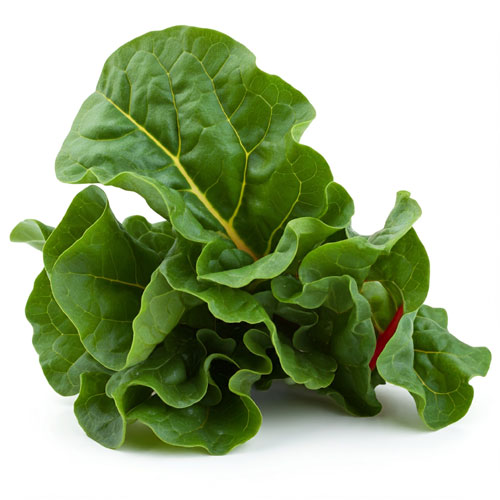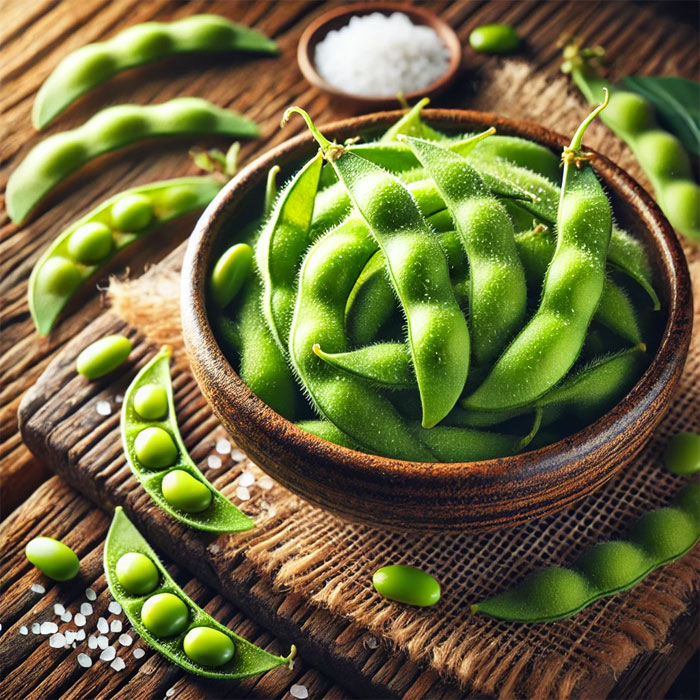Magnesium is an essential mineral that supports over 300 enzymatic processes in the human body [1]. It is necessary for muscular function, energy production, and a steady heartbeat. However, many people struggle to meet their daily magnesium needs [2]. Eating meals high in magnesium is an excellent approach to ensure enough consumption.
This article explores the top 15 magnesium-rich foods, highlighting their overall health benefits and why magnesium is an essential nutrient for everyone. Additionally, we will examine the advantages of magnesium powder as a dietary supplement, discuss the broader benefits of magnesium for the body, and outline any potential side effects that users should be aware of.
Key Takeaways:
- • Magnesium is essential for muscle, energy production, neuron function, and bone health.
- • Adults’ recommended daily intake ranges from 270-300 mg, depending on age and gender [36].
- • Consuming magnesium-rich foods is a natural method to boost your health and well-being.
Importance of Magnesium:
Magnesium helps with muscle contraction, blood pressure regulation, and energy production [39]. Adequate magnesium levels are significant for women, as magnesium for women can support bone health, reduce the risk of osteoporosis, and alleviate PMS symptoms [40].
Magnesium is an essential mineral present in many different types of diets. Whole grains, legumes, nuts, seeds, leafy greens, and some fish are good sources of magnesium. Regular consumption of these foods can promote the maintenance of healthy magnesium levels. Magnesium supplements may be a convenient alternative for those unable to meet their magnesium requirements through food. However, it’s best to get your magnesium naturally through diet to benefit from other nutrients in these foods [45].
Foods rich in magnesium
1. Spinach
Magnesium Content: 79 mg per 100g [3].
Spinach is a leafy green vegetable high in magnesium, making it one of the best sources of this essential mineral. It is also rich in iron, calcium, and vitamins, contributing to overall well-being. Add spinach to salads, smoothies, or soups for an easy magnesium boost [41].
2. Almonds
Magnesium Content: 258 mg per 100g [4].
Nuts, particularly almonds, are a great source of magnesium. A handful of almonds can provide much of your daily magnesium needs. These nuts include healthy fats, protein, and fibre, making them an excellent snack. Magnesium improves women’s heart health, particularly after menopause, when cardiovascular risk rises [6]. Add almonds to your diet by sprinkling them on oatmeal, adding to smoothies, or enjoying a handful as a nutritious snack.
3. Avocado
Magnesium Content: 29 mg per 100g [7].
Avocados contain magnesium, potassium, and healthful fats. Magnesium reduces inflammation, promotes digestive health, and improves cognitive function [8]. Women frequently seek avocados for their beauty benefits because the fruit is high in skin-nourishing lipids and minerals [9]. Enjoy avocados sliced in salads, blended in smoothies, or spread on toast for a magnesium-rich addition to your meals.
4. Dark Chocolate
Magnesium Content: 228 mg per 100g (70-85% cocoa solid) [43].
Dark chocolate is not only tasty but also high in magnesium. Use dark chocolate with at least 70% cocoa to optimise magnesium content. It also contains prebiotic fibre, which can aid in feeding the good bacteria in the gut, as well as iron, copper, and manganese. Regular consumption of dark chocolate can improve heart health and happiness, which is especially good for women during hormonal changes [10]. Enjoy dark chocolate as a snack, or add shavings to oatmeal and desserts for a delicious magnesium boost.
5. Pumpkin Seeds
Magnesium Content: 500 mg per 100g [11].
Pumpkin seeds, or pepitas, are an excellent source of magnesium. These seeds also contain antioxidants and omega-3 fatty acids, which are essential for heart and brain health. Consuming pumpkin seeds can lower inflammation and improve peaceful sleep, making magnesium a necessary supplement for women suffering from stress and insomnia [12]. Sprinkle pumpkin seeds over salads, yoghurt, or smoothie bowls for a crunchy, magnesium-rich boost.
6. Black Beans- Cooked
Magnesium Content: 70 mg per 100g [13].
Beans and legumes are known for their high magnesium content, and black beans are no exception. They are also rich in fibre and protein, making them a great addition to any diet, particularly for vegans and vegetarians. Magnesium in black beans supports nerve function and helps manage blood sugar levels [14]. Add black beans to salads, soups, or burritos for a hearty magnesium and protein addition.
7. Tofu
Magnesium Content: 37 mg per 100g [15].
Tofu, a soy-based food, is an excellent source of magnesium, particularly for those on a plant-based diet. It provides a good dose of protein and calcium alongside magnesium [17]. Women, especially vegans, can benefit from tofu’s magnesium content to support bone health and reduce the risk of osteoporosis [16]. Include tofu in stir-fries, salads, or grilled dishes for a versatile, magnesium-rich protein source.
8. Bananas
Magnesium Content: 28 mg per 100g [18].
While bananas are well known for their potassium content, they also contain a significant quantity of magnesium. This fruit is ideal for snacking and delivers rapid energy. Magnesium in bananas can relieve muscle cramps and boost mood, which is especially beneficial to women during their menstrual cycles [10]. Slice bananas over cereal, blend them into smoothies or enjoy as a quick snack for a magnesium and energy boost.

9. Mackerel
Magnesium Content: 76mg per 100g [19].
Fatty fish, such as mackerel, contain high omega-3 fatty acids and magnesium levels. This fish promotes heart health, improves brain function, and decreases inflammation. Consuming magnesium-rich seafood, such as mackerel, can also help to reduce the risk of chronic illnesses, including diabetes and cardiovascular disease [20]. Grill or bake mackerel and serve with a side of vegetables or salad for a heart-healthy, magnesium-rich meal.
10. Quinoa
Magnesium Content: 64 mg per 100g [21].
Quinoa is a multipurpose grain that contains numerous minerals, including magnesium. It is a complete protein that contains all nine necessary amino acids, making it an ideal choice for vegetarians. Quinoa’s magnesium content regulates blood sugar and promotes cardiovascular health [22]. Use quinoa as a base for salads, stir into soups, or enjoy it as a side dish to boost your meal’s magnesium content.

11. Swiss Chard
Magnesium Content: 86 mg per 100g [23].
Swiss chard, like spinach, is a leafy green rich in magnesium. Swiss chard promotes digestion, muscle function, and cardiovascular health. Incorporating Swiss chard into your meals can significantly increase your magnesium intake while delivering minerals and fibre [24]. Sauté Swiss chard with garlic or add it to salads and soups for a nutritious magnesium boost.
12. Cashews
Magnesium Content: 292 mg per 100g [25].
Cashews are high in magnesium, healthy fats, and proteins. They make a healthy snack and are a great addition to many recipes. Magnesium in cashews reduces fatigue and promotes healthy metabolism, which benefits women, particularly those dealing with hormonal shifts [26]. Snack on cashews or sprinkle them over salads and stir-fries to add a healthy dose of magnesium.

13. Edamame
Magnesium Content: 64 mg per 100g [27].
Edamame, or young soybeans, are a nutritious snack high in magnesium and protein. They are particularly beneficial for women because soy is known to help regulate oestrogen levels, making it helpful during menopause [28]. Include steamed edamame as a snack or toss it into salads and rice bowls to boost magnesium and protein.
14. Oats
Magnesium Content: 138 mg per 100g [29]
Oats are rich in magnesium, fibre, and antioxidants. Regular oats can help with blood sugar control, lower cholesterol levels, and promote satiety, making it an excellent food choice for women managing weight [30]. Prepare oats as a hearty breakfast porridge, add them to smoothies, or use them in baking for a filling, magnesium-rich start to the day.
15. Brown Rice
Magnesium Content: 39 mg per 100g [31].
Brown rice is a whole grain with a higher magnesium content than white rice. It’s high in fibre, which helps with digestion. Brown rice’s magnesium content combats weariness and promotes muscle function, making it ideal for active people and ladies who require extra energy. It also has compounds called lignans that help to reduce heart disease risk factors [32]. Serve brown rice as a side dish, or use it as a base for stir-fries and salads to increase your magnesium intake.
Benefits of Magnesium
Magnesium is essential for several body functions, including cell regeneration and DNA replication [44]. This mineral is required for appropriate muscle and neuron function, blood sugar control, and heart health. Furthermore, it may improve mood and reduce anxiety and depression symptoms, which is especially good for women going through hormonal changes [33]. The magnesium benefits also include enhancing sleep quality, alleviating PMS symptoms, and reducing the incidence of migraines [38].
Conclusion:
Magnesium is an essential mineral with numerous health benefits, crucial for maintaining various bodily functions for all genders and age groups. Incorporating magnesium-rich foods like spinach, almonds, and avocados into your daily diet can help support optimal health. Visiting trusted platforms like Nature’s Fix is a great option for those looking to supplement their intake. Nature’s Fix offers a wide range of magnesium supplements from reputable brands, helping you meet your specific health needs. However, be mindful of not exceeding recommended levels, particularly when using supplements, to avoid potential side effects.
FAQs:
1. What are the benefits of magnesium?
Magnesium contributes to nearly 300 metabolic events in the body, including energy production, muscular function, and bone health. It regulates blood pressure, maintains neuronal function, and promotes immunological health [34].
2. What are the adverse effects of magnesium?
Excessive magnesium intake, usually from supplements rather than food, can result in diarrhoea, nausea, and stomach cramps. Severe cases may result in an erratic heartbeat or cardiac arrest [33].
3. Why is magnesium essential for women?
Magnesium for women helps to balance hormones, reduce PMS symptoms, and improve bone health. It also helps to relieve pregnancy pain and is essential for maintaining bone density during menopause [42].
4. Can magnesium powder be taken as a supplement?
Yes, magnesium powder is frequently used to augment magnesium intake, particularly for people who do not obtain enough in their diet. It is widely used to enhance relaxation, muscular recovery, and better sleep quality [34].
5. What are the potential risks of excessive magnesium consumption?
In rare cases, excessive consumption can lead to more severe health issues, such as an irregular pulse, low blood pressure, respiratory paralysis, and cardiac arrest[37].
6. How much magnesium do I require each day?
The RDA for magnesium is 270 mg for adult women and 300 mg for adult men. Pregnant women and others with certain medical disorders may need more [36].
7. Can I obtain enough magnesium through food alone?
Yes, many people can get enough magnesium by eating a well-balanced diet rich in magnesium. However, persons with specific health issues or dietary limitations may require supplements to reach their daily requirements [35].
8. What happens if I don’t consume enough magnesium?
Magnesium deficiency can cause muscle cramps, tiredness, and irregular heartbeats. Long-term deficits may lead to osteoporosis, hypertension, and insulin resistance [34].
References:
1 – https://www.sciencedirect.com/science/article/abs/pii/S1043452621000012
2 – https://www.healthline.com/nutrition/what-does-magnesium-do
3 – https://fdc.nal.usda.gov/fdc-app.html#/food-details/168462/nutrients
4 – https://fdc.nal.usda.gov/fdc-app.html#/food-details/2346393/nutrients
5 – https://www.ncbi.nlm.nih.gov/pmc/articles/PMC10074318/
6 – https://www.ncbi.nlm.nih.gov/pmc/articles/PMC5852744/
7 – https://fdc.nal.usda.gov/fdc-app.html#/food-details/171705/nutrients
8 – https://www.healthline.com/nutrition/avocado-nutrition#bottom-line
9 – https://oncquestlabs.com/blog/avocado-fruit-benefits-for-skin/#:~:text=Avocados%20are%20excellent%20natural%20moisturizers,keeping%20the%20skin%20hydrated%20longer.
10 – https://www.healthline.com/nutrition/10-foods-high-in-magnesium#dark-chocolate
11 – https://fdc.nal.usda.gov/fdc-app.html#/food-details/2515380/nutrients
12 – https://www.carehospitals.com/blog-detail/benefits-of-pumpkin-seeds/#:~:text=Additionally%2C%20magnesium%20also%20helps%20to,the%20breast%20and%20prostate%20glands.
13 – https://fdc.nal.usda.gov/fdc-app.html#/food-details/173735/nutrients
14 – https://www.healthline.com/nutrition/are-black-beans-healthy#benefits
15 – https://fdc.nal.usda.gov/fdc-app.html#/food-details/172448/nutrients
16 – https://www.ncbi.nlm.nih.gov/pmc/articles/PMC4717511/
17 – https://www.webmd.com/food-recipes/benefits-tofu
18 – https://fdc.nal.usda.gov/fdc-app.html#/food-details/1105314/nutrients
19 – https://fdc.nal.usda.gov/fdc-app.html#/food-details/175119/nutrients
20 – https://www.verywellfit.com/mackerel-nutrition-facts-and-health-benefits-5074868
21 – https://fdc.nal.usda.gov/fdc-app.html#/food-details/168917/nutrients
22 – https://www.healthline.com/nutrition/8-health-benefits-quinoa
23 – https://fdc.nal.usda.gov/fdc-app.html#/food-details/170401/nutrients
24 – https://www.healthline.com/nutrition/swiss-chard
25 – https://fdc.nal.usda.gov/fdc-app.html#/food-details/170162/nutrients
26 – https://www.healthline.com/nutrition/are-cashews-good-for-you
27 – https://fdc.nal.usda.gov/fdc-app.html#/food-details/168411/nutrients
28 – https://www.webmd.com/diet/health-benefits-edamame
29 – https://fdc.nal.usda.gov/fdc-app.html#/food-details/1101825/nutrients
30 – https://www.healthline.com/nutrition/9-benefits-oats-oatmeal
31 – https://fdc.nal.usda.gov/fdc-app.html#/food-details/1101631/nutrients
32 – https://www.healthline.com/nutrition/is-brown-rice-good-for-you#heart-health
33 – https://www.healthline.com/nutrition/magnesium-supplements#benefits
34 – https://ods.od.nih.gov/factsheets/Magnesium-HealthProfessional/
35 – https://www.mayoclinic.org/drugs-supplements/magnesium-supplement-oral-route/description/drg-20070730
36 – https://www.nhs.uk/conditions/vitamins-and-minerals/others/#:~:text=The%20amount%20of%20magnesium%20you,women%20(19%20to%2064%20years)
37 – https://www.ncbi.nlm.nih.gov/books/NBK554593/
38 – https://helloclue.com/articles/cycle-a-z/magnesium-and-the-menstrual-cycle
39 – https://medlineplus.gov/ency/article/002423.htm#:~:text=Magnesium%20is%20needed%20for%20more,production%20of%20energy%20and%20protein
40 – https://wellbeingnutrition.com/blogs/womens-health/magnesium-for-pms-what-is-pms-causes-of-pms-hormonal-imbalance-magnesium-for-pms-hormonal-balance-magnesium-for-menstrual-cycle-magnesium-for-cramps-magnesium-for-skin-conclusion#:~:text=Adequate%20magnesium%20levels%20promote%20a,strong%20bones%20and%20prevent%20osteoporosis.
41 – https://health.clevelandclinic.org/benefits-of-spinach
42 – https://www.healthline.com/nutrition/magnesium-for-menopause#_noHeaderPrefixedContent
43 – https://fdc.nal.usda.gov/fdc-app.html#/food-details/170273/nutrients
44 – https://pubmed.ncbi.nlm.nih.gov/2472534/
45 – https://ods.od.nih.gov/factsheets/Magnesium-HealthProfessional/






